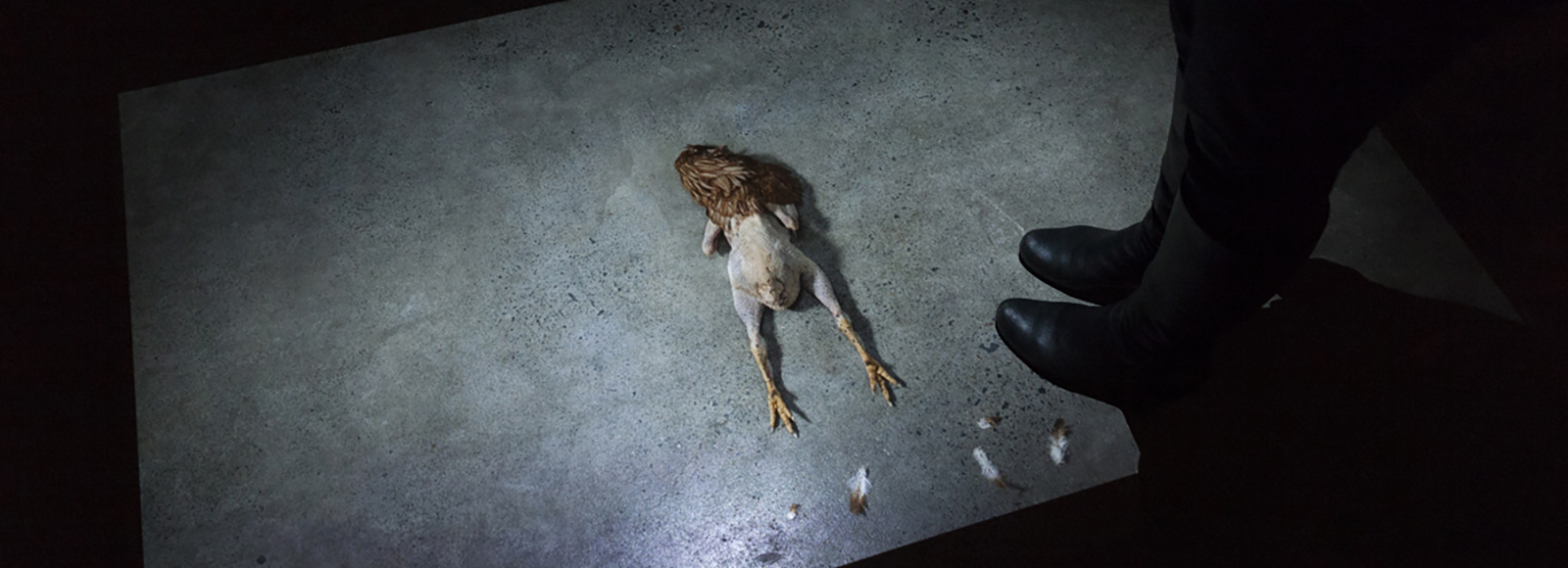
Sydney-based artist, Helen Pynor's new work developed during her three-month residency at the pioneering Max Planck Institute of Molecular Cell Biology and Genetics (CBG) in Dresden, Germany, as part of the major exhibition that recently opened at UNSW Galleries titled The Patient.
Pynor’s work, The End is a Distant Memory, explores her ongoing fascination with the porosity between mind and body, and culture and biology. The installation showcases the human relationship with, and treatment and consumption of chickens. As part of her residency at CBG, Pynor examined whether it was possible to cultivate fibroblast cells – living cells – from chicken meat purchased off a supermarket shelf. She found that indeed it is possible.
Her art puts front and centre the entire life cycle of chickens raised for human consumption, including a video made at factory farm before the harvest and slaughter takes place; crisp large scale photos of chicken carcasses arranged to resemble lounging human forms; and time-lapse microscopy footage dedicated to the death of a single chicken specimen dropped from a great height onto a concrete floor (the chicken was not actually killed in the making of the artwork but had been obtained from an abattoir). This artwork features a slow motions de-feathering process and removal of the head and legs, done by Pynor over the course of a day.
Pynor says, “The installation forms part of an ongoing investigation into the ambiguity of the life-death boundary. The next stage of the project will explore human near-death experiences.”
The End is a Distant Memory forms part of The Patient exhibition on at UNSW Galleries until 6 August. More information on The Patient and associated Public Programs can be found here.
